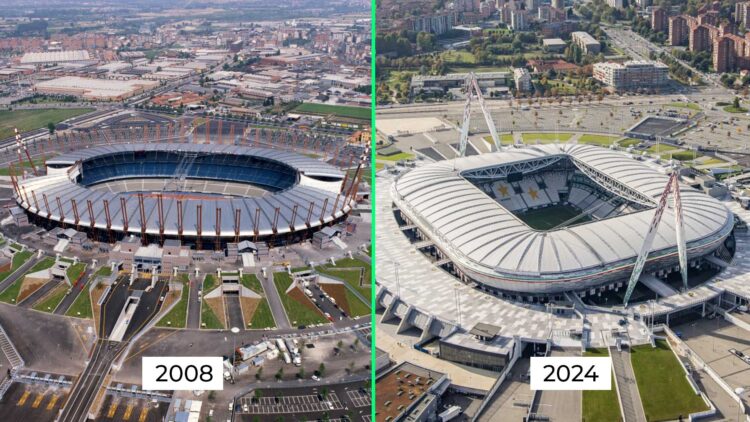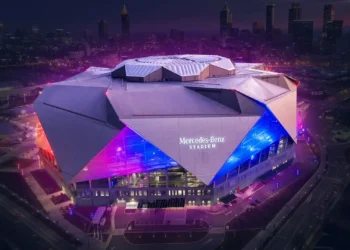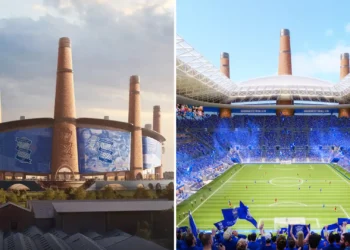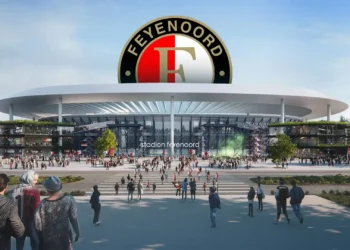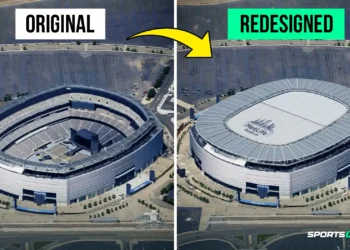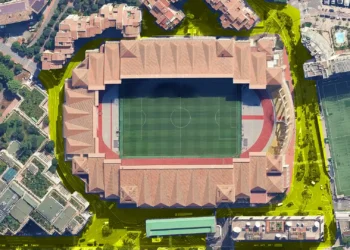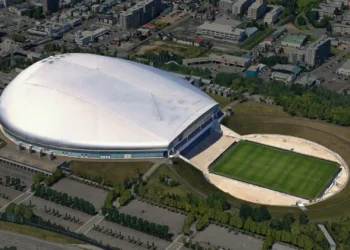Stadiums around the world serve as iconic landmarks and cultural symbols, evolving over time to meet modern demands while retaining their historical significance. Here’s a look at some of the most famous stadiums, tracing their journey from their origins to their current status:
Wembley Stadium
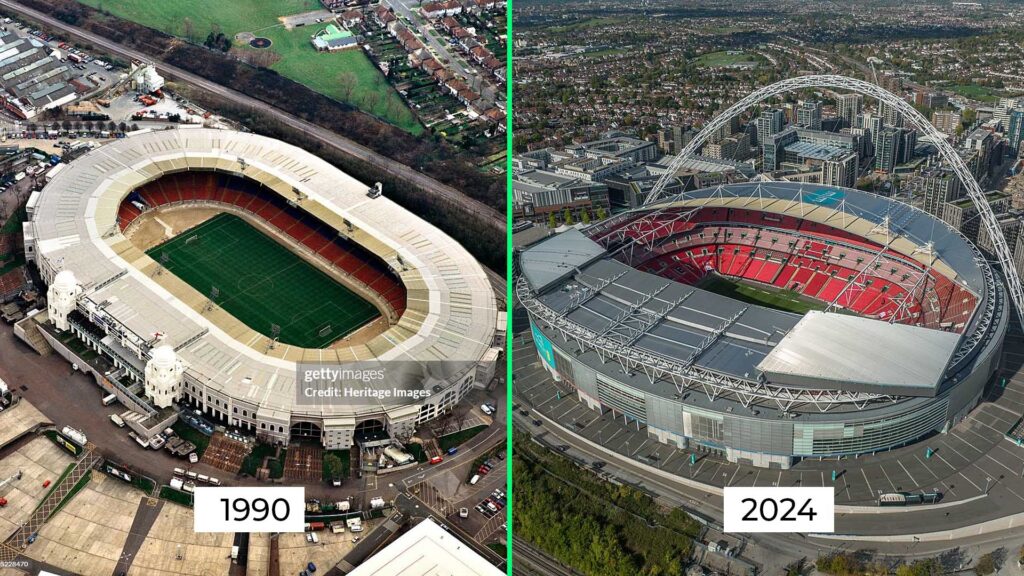
Origins and Early Years: 1923-2000
Wembley Stadium first opened its doors in 1923, originally known as the Empire Stadium. It was built for the British Empire Exhibition and quickly became the heart of English football. The stadium’s inaugural event was the 1923 FA Cup Final, famously known as the “White Horse Final,” due to a police horse named Billie controlling the crowds. The venue’s distinctive Twin Towers became an enduring symbol, witnessing historic events such as the 1966 FIFA World Cup final, where England clinched their first and only World Cup title.
Transition and Modernization: 2000-2007
By the late 20th century, the original Wembley had aged significantly, prompting plans for a modern replacement. The old stadium closed in 2000 and was subsequently demolished in 2003. During this period, England’s national football team played their home matches at various venues across the country.
The New Wembley: 2007-Present
In 2007, the new Wembley Stadium opened on the same site, boasting a modern design and advanced facilities. Designed by Foster and Partners and HOK Sport (now Populous), the new stadium features a distinctive arch that spans 317 meters, providing structural support and becoming a new architectural icon. With a seating capacity of 90,000, it is one of the largest stadiums in Europe.
The modern Wembley incorporates state-of-the-art amenities, including a retractable roof, enhanced acoustics, and spacious concourses. It is designed to host a variety of events, from football matches to concerts and other large-scale performances.
.
San Siro Stadium
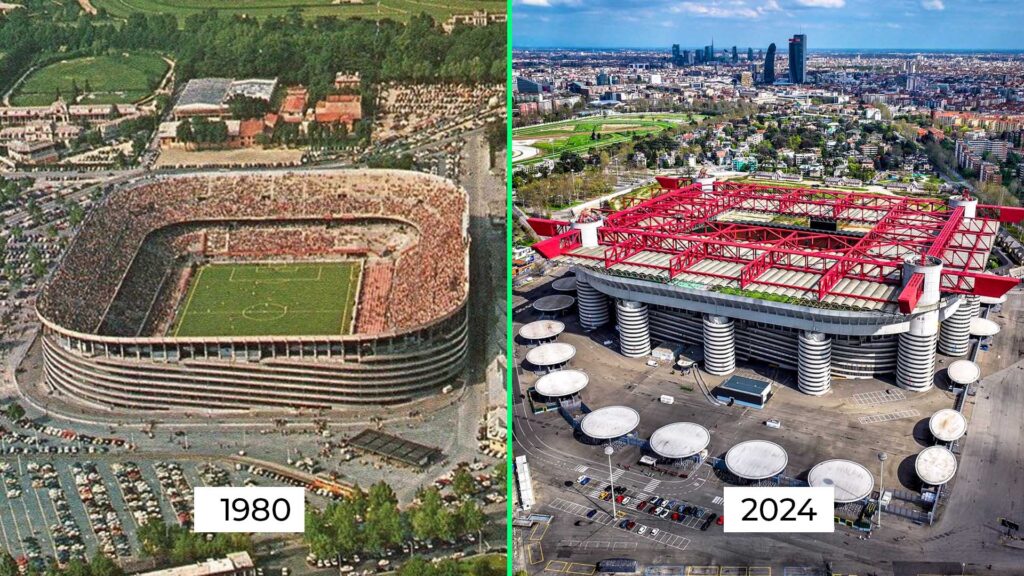
Major Renovations and Expansions: 1950s-1990s
The 1950s and 1960s saw the first major renovations, including the addition of a second tier, increasing the capacity to 85,000. The 1980s brought further enhancements, notably for the 1990 FIFA World Cup. A third tier was added, supported by 11 concrete towers, and a roof was installed, giving San Siro its distinctive modern appearance. These renovations transformed San Siro into a 90,000-seat stadium, making it one of the largest in Europe.
Modernization and Contemporary Changes: 2000s-Present
In the 2000s, San Siro continued to modernize, with upgrades to facilities and safety measures to meet UEFA standards. Seating capacity was slightly reduced to around 80,000 to improve comfort and safety. The stadium has also embraced modern technology, enhancing the fan experience with updated video screens and improved acoustics.
San Siro remains a vibrant hub for football, hosting matches for both AC Milan and Inter Milan, along with numerous UEFA Champions League fixtures and international matches. The stadium has also been a premier venue for concerts and cultural events, featuring performances by global superstars.
Future Prospects
Looking ahead, there are plans to further renovate or potentially replace San Siro. Both AC Milan and Inter Milan have proposed the construction of a new, state-of-the-art stadium nearby, citing the need for a more modern and efficient facility. These plans are part of a broader vision to revitalize the surrounding area, ensuring that Milan remains at the forefront of global sports and entertainment.
.
Juventus Stadium
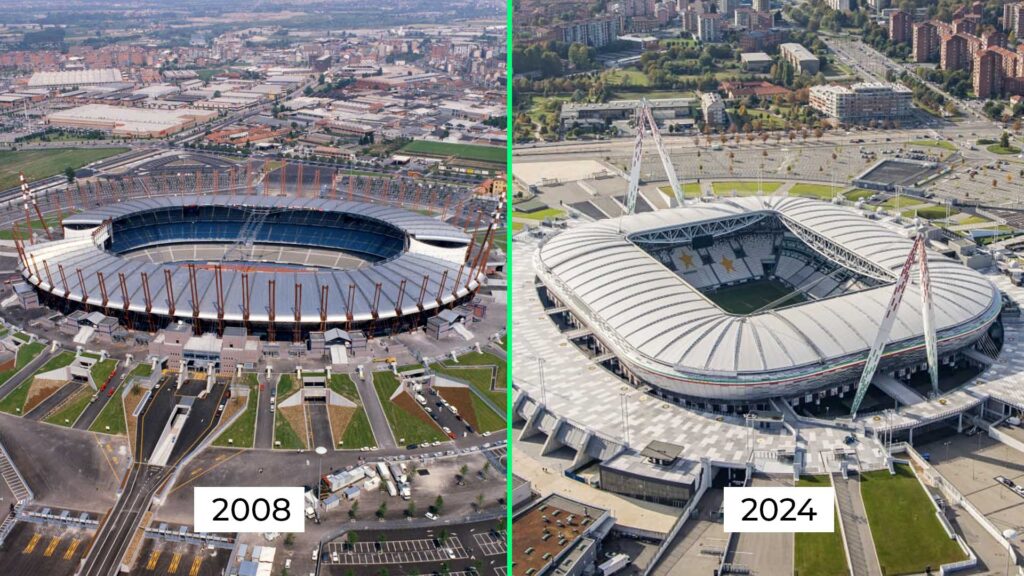
Origins and Delle Alpi Era: 1990-2006
Before Juventus Stadium, Juventus FC played their home matches at Stadio delle Alpi, which was built for the 1990 FIFA World Cup. With a capacity of 69,000, Delle Alpi was a modern facility for its time. However, the stadium was often criticized for its poor sightlines and a running track that distanced fans from the pitch, leading to a lackluster atmosphere during matches.
Concept and Construction of Juventus Stadium: 2006-2011
Recognizing the need for a more intimate and fan-friendly environment, Juventus made the bold decision to demolish Stadio delle Alpi and build a new, state-of-the-art stadium on the same site. The construction of Juventus Stadium began in 2009, with the aim of creating a venue that would bring fans closer to the action and enhance the overall matchday experience.
Designed by architects Hernando Suarez and Gino Zavanella, Juventus Stadium was completed in 2011. With a seating capacity of 41,507, it was significantly smaller than Delle Alpi, but its design focused on maximizing atmosphere and fan engagement. The stands were built closer to the pitch, and the absence of a running track created an intense and immersive environment.
Inauguration and Modern Features: 2011-Present
Juventus Stadium was officially inaugurated on September 8, 2011, with a friendly match against Notts County, the club that inspired Juventus’ black-and-white striped kits. The stadium quickly became renowned for its modern amenities, including premium seating options, restaurants, and a Juventus museum.
In 2017, the stadium’s naming rights were sold to Allianz, resulting in its current name, Allianz Stadium. The venue has since hosted numerous high-profile matches, including UEFA Champions League fixtures and international games, as well as concerts and other events.
.
Santiago Bernabéu Stadium
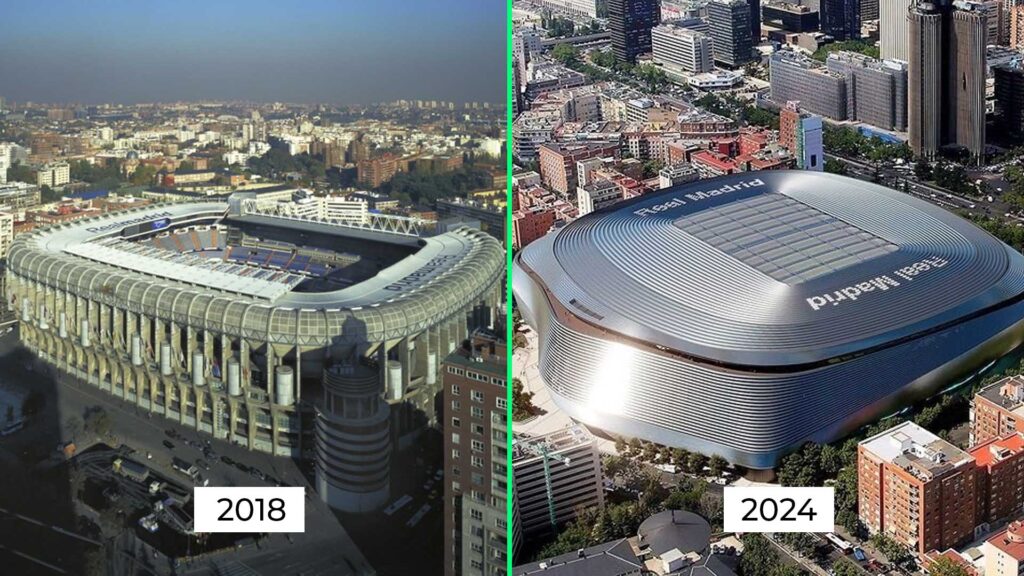
Expansion and Modernization: 1950s-2000s
The 1950s and 1960s brought significant expansions, including the addition of a new tier, increasing the capacity to over 125,000, making it one of the largest stadiums in the world at the time. This period also saw Real Madrid’s rise to dominance, with the stadium hosting numerous European Cup finals.
In the 1980s, to comply with new safety regulations and UEFA standards, the stadium underwent major renovations, including the installation of seating in all sections, reducing the capacity to approximately 90,000. The addition of a roof in the 1990s further modernized the stadium, providing shelter for most of the spectators.
21st Century Renovations: 2000s-Present
The turn of the century marked a new phase of modernization for the Santiago Bernabéu. Between 2001 and 2006, extensive renovations were carried out, including the installation of modern amenities, improved seating, VIP areas, and advanced technology such as giant video screens.
In 2019, Real Madrid began an ambitious renovation project to transform the Santiago Bernabéu into a state-of-the-art facility. The project, due for completion in 2024, includes a retractable roof, a 360-degree video board and a redesigned exterior with a futuristic facade. These improvements aim to improve the fan experience, increase the stadium’s versatility for hosting various events and ensure it remains a top-tier venue on the global sporting landscape.
.
Maracanã Stadium

Inception and Early Glory: 1950s-1980s
Maracanã Stadium was inaugurated on June 16, 1950, in time for the FIFA World Cup held in Brazil. Designed by a team of architects led by Waldir Ramos and Raphael Galvão, it was the largest stadium in the world at the time, with a seating capacity of around 200,000. The stadium’s first match was a World Cup game between Brazil and Mexico, which Brazil won 4-0.
The most infamous event in Maracanã’s early history was the 1950 World Cup final, known as the “Maracanazo,” where Brazil lost to Uruguay in front of a record crowd, leaving an indelible mark on Brazilian football history.
Renovations and Modernization: 1990s-2010s
The stadium underwent its first major renovation in preparation for the 1990s and the 2000s. Safety regulations required the reduction of its capacity, converting standing areas to seating, which decreased the capacity to around 100,000.
In preparation for the 2014 FIFA World Cup and the 2016 Summer Olympics, Maracanã underwent extensive renovations from 2010 to 2013. These updates included the installation of a new roof covering 95% of the seats, the replacement of seating to improve comfort and safety, and the introduction of modern facilities such as VIP areas, media zones, and improved accessibility. The capacity was further reduced to approximately 78,838 to meet modern safety standards.
Recent Developments and Current Use
Today, Maracanã remains a premier sports venue, hosting major football matches, including the 2014 World Cup final, where Germany defeated Argentina, and the 2016 Olympic football finals. The stadium also hosted the opening and closing ceremonies of the 2016 Olympics.
Beyond football, Maracanã has been a venue for significant cultural events, including concerts by international artists like Frank Sinatra, Paul McCartney, and Beyoncé, cementing its status as a multifaceted entertainment hub.

